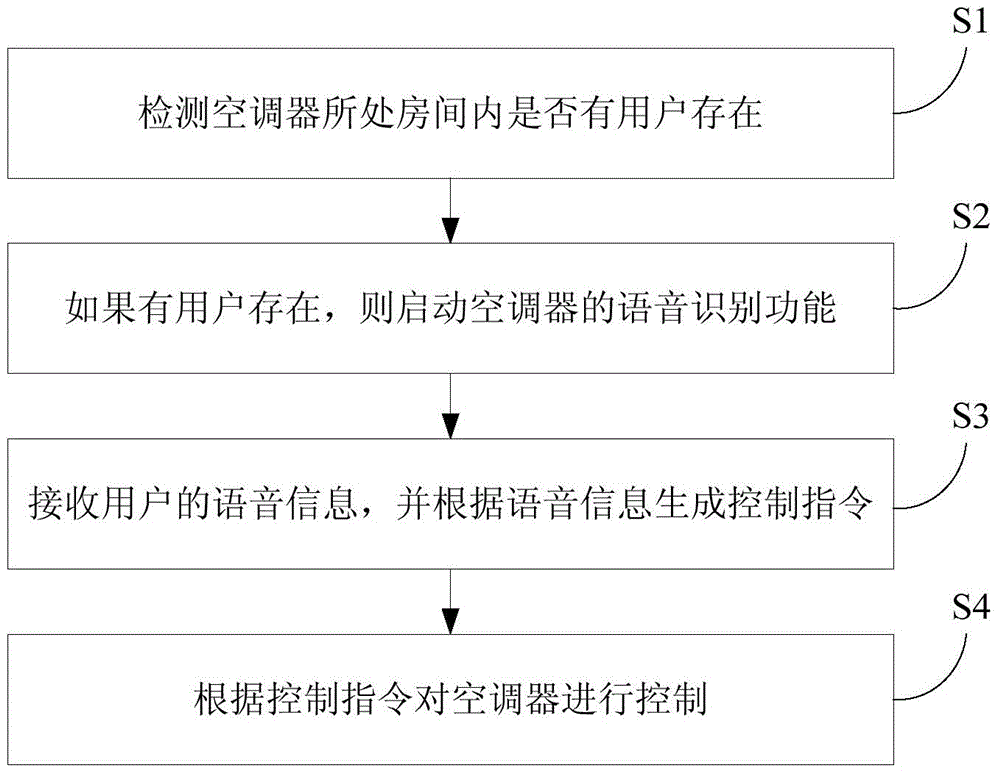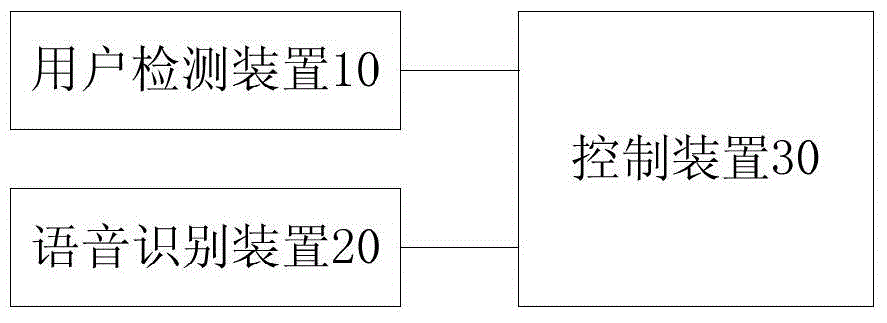Method and system for controlling air conditioner
A control method and control system technology, applied in the field of air conditioners, can solve the problems of high probability of false triggering of wake-up words, wrong triggering of wake-up words, and no release, etc., to achieve the effect of improving user experience and preventing false actions
- Summary
- Abstract
- Description
- Claims
- Application Information
AI Technical Summary
Problems solved by technology
Method used
Image
Examples
Embodiment Construction
[0027] Embodiments of the present invention are described in detail below, examples of which are shown in the drawings, wherein the same or similar reference numerals designate the same or similar elements or elements having the same or similar functions throughout. The embodiments described below by referring to the figures are exemplary and are intended to explain the present invention and should not be construed as limiting the present invention.
[0028] In the related technology, the scheme of controlling the air conditioner through voice purely uses voice recognition technology to detect the sound signal. In this technical solution, in a noisy environment, the sound signal in the space is random, and a certain sound segment will appear. If it happens to match the command word for controlling the air conditioner, the air conditioner system misjudges that the user issued a voice control command, thus causing the air conditioner to malfunction.
[0029] In order to solve th...
PUM
 Login to View More
Login to View More Abstract
Description
Claims
Application Information
 Login to View More
Login to View More - R&D
- Intellectual Property
- Life Sciences
- Materials
- Tech Scout
- Unparalleled Data Quality
- Higher Quality Content
- 60% Fewer Hallucinations
Browse by: Latest US Patents, China's latest patents, Technical Efficacy Thesaurus, Application Domain, Technology Topic, Popular Technical Reports.
© 2025 PatSnap. All rights reserved.Legal|Privacy policy|Modern Slavery Act Transparency Statement|Sitemap|About US| Contact US: help@patsnap.com


